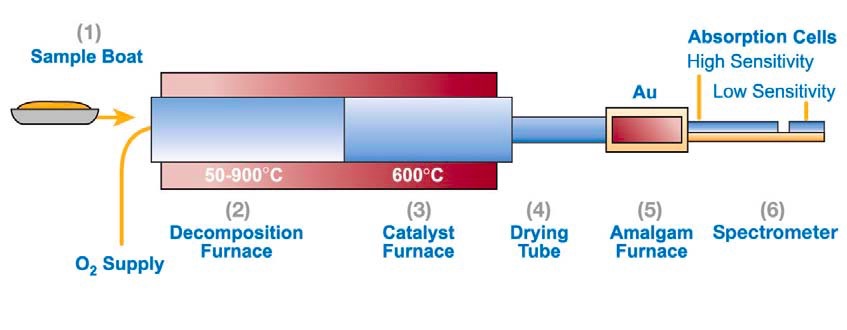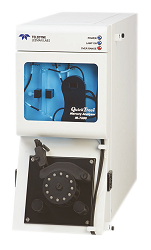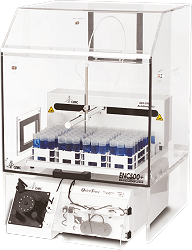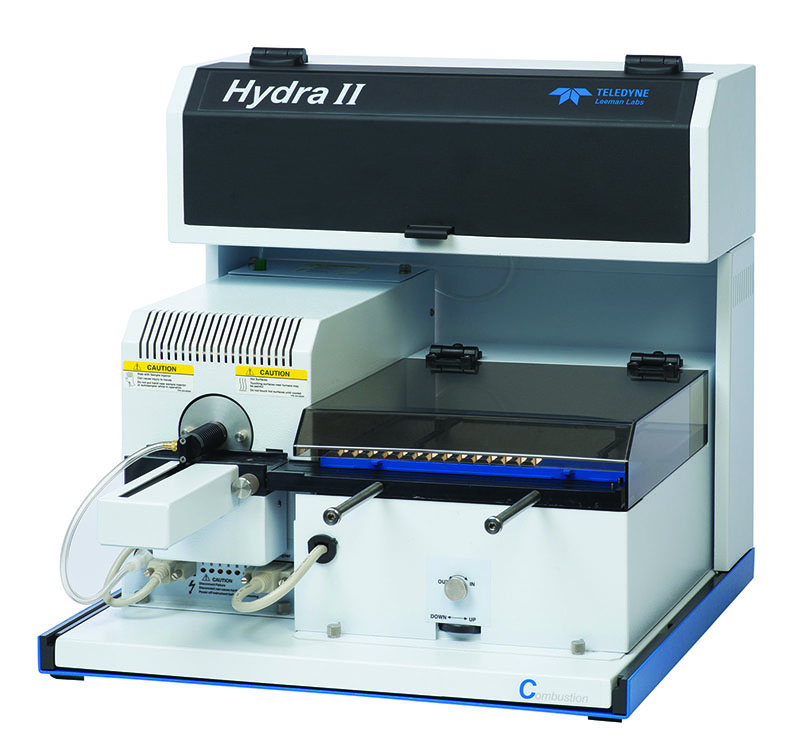
Solids and Liquids Handling in a Single Mercury Analyser
The accurate determination of trace levels of mercury in solids and semi-solids is an important analytical requirement in a number of industries. Most mercury analysers are designed for the analysis of liquid samples using cold vapour atomic absorption spectroscopy (CVAAS) or cold vapour atomic fluorescence spectroscopy, (CVAFS). In these instruments, the liquid samples are treated to convert mercury to the +2 valence state required for the analysis process. Solid samples require an additional sample digestion pre-treatment stage to get the solids into solution. This adds time and complexity to the analysis. The resulting solutions are then reacted with expensive stannous chloride to reduce the mercury to Hg0 for analysis. Waste products from the reactions are hazardous and must be safely disposed of. However the use of a thermal decomposition-based mercury analyser allows direct analyses of solid samples with no pre-treatment making them quick and simple to use and has the key benefit that it reports accurate results regardless of differences in the sample matrix. In addition, no hazardous waste is generated using this method, eliminating the additional high costs that are associated with the safe disposal of waste generated in liquid analysis procedures.
The thermal decomposition method
The Hydra IIC from Teledyne Leeman Labs is a fully automated mercury analyser that provides fast, simple and convenient analyses of solid and semi-solid samples using thermal decomposition to liberate elemental mercury from the sample. As shown in the diagram, a weighed sample in a sample boat is introduced into the decomposition furnace. The analytical process typically involves combusting the sample at high temperatures with oxygen, although, for some applications gentle heating of the sample in air is adequate to release the mercury. During the combustion step the evolved gases are carried through a heated catalyst to produce free mercury while removing halogens, nitrogen oxides, and sulphur oxides. The remaining combustion products including elemental mercury (Hg) are swept first through a dryer and then through a gold amalgamation trap where all the elemental mercury is captured. The amalgamation trap is then heated to release the mercury into a carrier gas which transports it into an atomic absorption spectrometer. This features a high intensity mercury lamp emitting UV light at 253.7 nm and an atomic absorption detector. By measuring the proportion of light absorbed by the mercury vapour in the sample, the mercury concentration can be calculated. The system has detection limits down to 0.001 ng Hg.

Liquid samples ??? the best of both worlds in a mercury analyser
The thermal decomposition method can also be used for liquid samples since the sample boats can be loaded with liquid volumes of less than 1 ml. The first part of the heating cycle dries the sample prior to combustion. This provides a simple method for analysing liquid samples. The Hydra II has a modular design that offers the best of both worlds. It is a mercury analyser that can be easily converted from direct analysis by combustion to liquid sample analysis using CVAAS, thus saving money, time and bench space. The solids autosampler and furnace module are readily exchanged for the liquid sample introduction components and autosampler. The AA detector is quickly converted by changing the spectrometer???s optical cell tubing configuration.

QuickTrace® M-7600 CVAA Mercury Analyzer

QuickTrace® M-8000 CVAF Mercury Analyzer

The Hydra IIC Mercury Analyser
Lambda is a leading supplier of analytical instruments and preparation equipment for a wide range of applications, including a choice of mercury analysers.
If you would like more information on the Hydra II system or any of the other mercury analysers, simply contact a member of the team today.